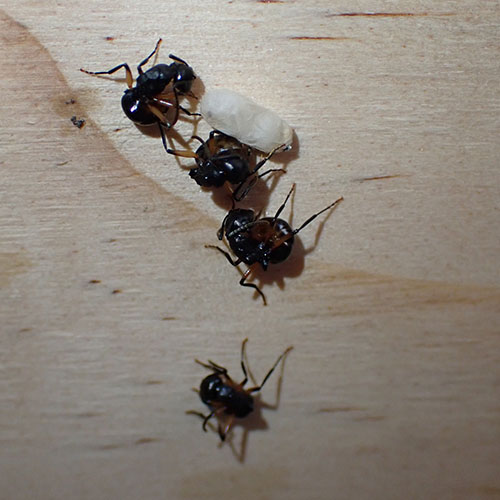Dead clever: Kangaroo Island ants’ killer strategy to avoid predators

This black beauty is found across Australia – the Northern Territory excepted – yet so little is known about Polyrhachis femorata that it doesn’t even have a common name. Like most ant species, they’re hard-working, sociable, exceptional at teamwork and… skilled at “playing dead”.
The accidental discovery was made by ecologists from the University of South Australia while surveying pygmy possum and bat nesting boxes on Kangaroo Island. When Associate Professor Sophie “Topa” Petit opened the lid to find of a pile of curled-up ants, she assumed the colony was dead…until one moved and gave the game away.
“This sort of defensive immobility is known among only a few ant species – in individuals or specific castes – but we don’t know of other instances when it’s been observed for entire colonies,” says Sophie. “In some boxes containing colonies of Polyrhachis femorata, some individuals took a while to stop moving, and others didn’t stop. The triggers for the behaviour are difficult to understand.”
In some colonies, the majority of ants lay “dead” until disturbed by one still walking around. The ants would then resurrect themselves, walk around for a bit and then promptly curl up to resume their inanimate performance.
This defensive strategy has been observed in a range of animals, from sharks, chickens, frogs, opossums and more. The behaviour is known by many names, including thanatosis, tonic immobility, self-mimesis and catalepsy.
“Every definition is slightly different,” Sophie explains. “But in this case, ‘feigning death’ seemed to us the best words to use.”
The research, published in the Australian Journal of Zoology, acknowledges the motive behind this behaviour remains a bit of a mystery.
“Of course, it’s a human interpretation that they’re feigning death,” Sophie says. “In fact, they may have a totally different intent. They might want to expose their spiny petiole [a defence mechanism] or they might be expressing submissiveness.”
The ants might feel protected by this behaviour or simply want to avoid detection.
Sophie suspects that this collective death mimicry is not unique to Polyrhachis femorata. It’s possibly a matter of time until death-feigning behaviours are found in the colonies of other ant species. It’s an area of research that Sophie hopes will receive more attention in the future.
“We have a relatively unknown world of ants under our feet and in the trees,” she says. “Ants provide crucial ecosystem services and are a vital part of functional ecosystems on Kangaroo Island and elsewhere.
“There’s so much more to discover. It’s really strange [Polyrhachis femorata] is not better known, but that’s probably because it mostly lives in trees. It hasn’t been observed much.”
Sophie’s discovery was also the first time Polyrhachis femorata has been documented in South Australia. It’s very likely the species also lives on the SA mainland.

